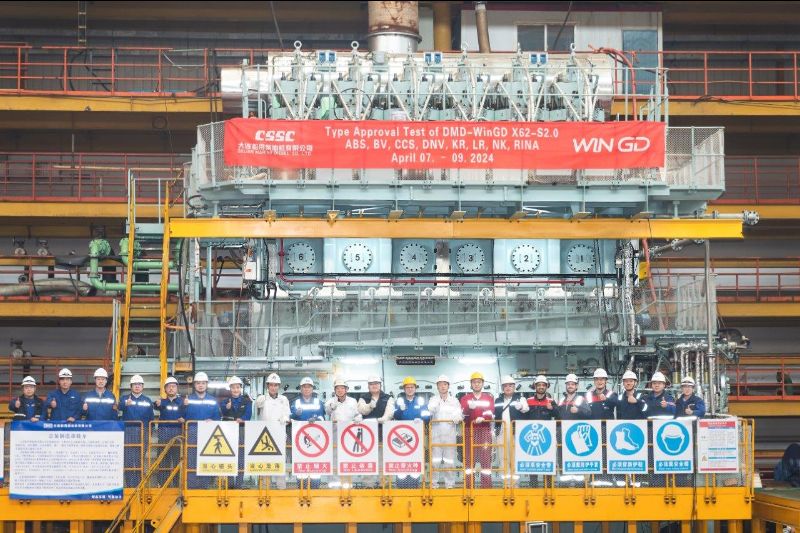
First ship ‘plugs-in’ at Port of Oakland
 APL flipped the switch last week on a clean-air effort that’s part of California’s maritime future.
APL flipped the switch last week on a clean-air effort that’s part of California’s maritime future.
The Singapore-based container shipping line became the first to shut down, or, “cold-iron,” a vessel’s engines to eliminate exhaust emissions at the Port of Oakland. As others follow suit – and regulators say they must – cold-ironing will become a staple on California’s coast.
“We have brought cold-ironing to the port,” proclaimed APL Americas President Gene Seroka. “When others do as well, we can further reduce vessel emissions and re-enforce that global trade growth is sustainable.”
The 900-foot APL Singapore switched off its auxiliary diesel engines last after berthing at APL’s Global Gateway Central terminal. It was the official launch of an APL program to cold-iron five vessels this year in the Transpacific Trade between Asia and the U.S.
How cold-ironing works
- Ships at berth connect via large cables to the landside power grid for electricity.
- The vessels then shut down auxiliary engines that have historically been used to power shipboard electrical systems.
- With engines switched off, approximately 1,000 pounds of nitrogen oxides emissions – a leading component of smog — 165 pounds of sulfur oxides, and 30 pounds of particulate matter are eliminated in a 24-hour port call.
The state of California has mandated cold-ironing for container ships by 2014. At that time, half of a carrier’s fleet must rely on shore power when berthed in California ports. APL is one of only a handful of carriers currently cold-ironing in California, and the only one in Oakland.
APL has spent $11 million to retrofit the five container vessels and re-wire its terminal for cold-ironing. It was awarded $4.8 million in California Air Resources Board grants by the Bay Area Air Quality Management District to complete the project.
“We commend APL’s efforts to move early to upgrade their berths and their ships in order to plug them into the grid when they’re berthed at their Port of Oakland terminal,” said Air Resources Board chairman Mary D. Nichols. “Working with the Bay Area Air Quality Management District, APL leveraged ARB’s incentive funding to make this project a reality so the residents of port communities will breathe cleaner air.”
Added Jack Broadbent, Executive Officer of the Bay Area Air Quality Management District: “Diesel emissions from port operations impact the West Oakland community. APL is sparing the air by reducing their emissions and setting an example that other carriers in the Port of Oakland can follow.”
Via APL

Subscribe for Daily Maritime Insights
Sign up for gCaptain’s newsletter and never miss an update
— trusted by our 109,120 members

Get The Industry’s Go-To News
Subscribe to gCaptain Daily and stay informed with the latest global maritime and offshore news

 Join The Club
Join The Club








